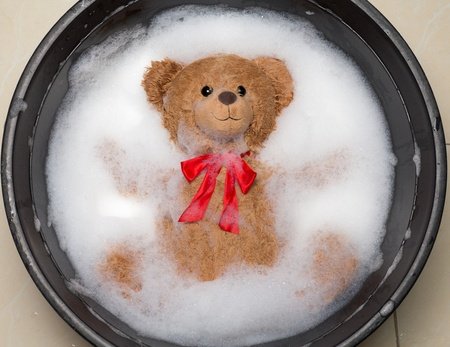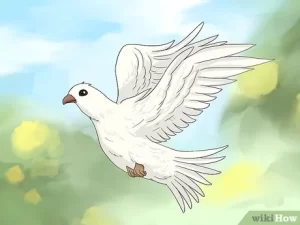
How to Wash Stuffed Animals: A Comprehensive Guide
Stuffed animals are beloved companions for children and adults alike, but they can quickly accumulate dirt, germs, and odors from regular play and snuggling. Keeping these plush toys clean is essential for maintaining hygiene and extending their lifespan. In this comprehensive guide, we’ll explore the various methods for washing stuffed animals, including machine washing, hand washing, and spot cleaning. We’ll also provide tips on how to effectively clean and maintain your favorite stuffed friends.
Preparing Stuffed Animals for Washing
Before washing your stuffed animals, it’s important to take a few precautions to ensure their safety and prevent damage during the cleaning process.
- Check the care label: Always check the care label on your stuffed animal for specific washing instructions. If the label is missing or unclear, it’s best to err on the side of caution and hand wash the toy.
- Remove loose parts: Detach any loose parts, such as buttons, bows, or accessories, and wash them separately. This will prevent them from getting lost or damaged during the washing process.
- Spot clean stains: Before washing, spot clean any visible stains using a mild detergent and a damp cloth. Gently blot the stain until it’s removed, being careful not to rub too hard and spread the stain.
- Protect the stuffed animal: To prevent damage during machine washing, place the stuffed animal inside a mesh laundry bag or a pillowcase with the ends tied. This will help keep the toy’s shape and prevent any loose parts from getting caught in the machine.
Machine Washing Stuffed Animals
Machine washing is a convenient and effective way to clean stuffed animals, especially if they are heavily soiled or have been exposed to germs. Follow these steps to machine wash your stuffed friends:
- Choose the right cycle: Select a gentle or delicate cycle on your washing machine, using cold water. Avoid using hot water, as it can cause the stuffing to clump or the fabric to shrink.
- Use a mild detergent: Choose a mild, fragrance-free detergent that is gentle on fabrics. Avoid using bleach or fabric softener, as they can damage the stuffed animal’s materials.
- Dry thoroughly: After the wash cycle is complete, remove the stuffed animal from the mesh bag or pillowcase. Fluff up the fur with your fingers and allow it to air dry completely. You can also place the stuffed animal in the dryer on a low heat setting, but be sure to check the care label first.
Hand Washing Stuffed Animals
Hand washing is a gentler alternative to machine washing, especially for older or more delicate stuffed animals. Follow these steps to hand wash your plush toys:
- Fill a sink or basin: Fill a clean sink or basin with cool water and add a small amount of mild detergent. Avoid using hot water, as it can cause the stuffing to clump.
- Submerge and gently squeeze: Submerge the stuffed animal in the soapy water and gently squeeze it to work the detergent into the fabric. Avoid twisting or wringing the toy, as this can damage the stuffing and fabric.
- Rinse thoroughly: Rinse the stuffed animal under cool running water, gently squeezing it to remove all traces of detergent. Continue rinsing until the water runs clear.
- Air dry: Lay the stuffed animal flat on a clean towel and allow it to air dry completely. You can also place it in front of a fan or in a sunny spot to speed up the drying process.
Spot Cleaning Stuffed Animals
Spot cleaning is a quick and easy way to remove small stains or dirt from stuffed animals without fully washing them. Follow these steps to spot clean your plush toys:
- Prepare a cleaning solution: Mix a small amount of mild detergent with cool water to create a cleaning solution.
- Dab the stain: Using a clean cloth or sponge, gently dab the stained area with the cleaning solution. Avoid rubbing the stain, as this can cause it to spread.
- Rinse and dry: Rinse the area with a clean, damp cloth and allow it to air dry completely.
Maintaining Stuffed Animals
To keep your stuffed animals looking and smelling fresh between washings, follow these maintenance tips:
- Brush regularly: Use a soft-bristled brush to gently brush the fur of your stuffed animals, removing any loose dirt or debris.
- Store properly: When not in use, store your stuffed animals in a cool, dry place, away from direct sunlight and moisture. You can also place them in a breathable garment bag or box to protect them from dust and pests.
- Spot clean as needed: Regularly spot clean your stuffed animals to prevent stains and odors from setting in. Address any spills or messes as soon as possible to make cleaning easier.
Table: Washing Methods and Considerations
| Washing Method | Suitable for | Advantages | Disadvantages |
|---|---|---|---|
| Machine Washing | Most stuffed animals | Convenient, effective for heavily soiled toys | Can cause damage to delicate toys |
| Hand Washing | Delicate or vintage stuffed animals | Gentle, allows for more control | Time-consuming, requires more effort |
| Spot Cleaning | Minor stains or dirt | Quick, easy, requires less effort | Only addresses small areas |
For more information on cleaning and maintaining stuffed animals, you can refer to the Wikipedia page on Plush Toys.
FAQ Section
How often should I wash stuffed animals?
The frequency of washing depends on how often the stuffed animal is used and how dirty it becomes. As a general rule, spot clean as needed and machine or hand wash every 1-2 months, or whenever the toy starts to look or smell dirty.
Can I put my stuffed animal in the dryer?
It’s best to air dry stuffed animals whenever possible to prevent damage to the fabric and stuffing. If the care label indicates that machine drying is safe, use a low heat setting and remove the toy as soon as it’s dry to prevent over-drying.
Can I use bleach to disinfect my stuffed animal?
Bleach is not recommended for cleaning stuffed animals, as it can damage the fabric and stuffing. Instead, use a mild detergent and consider using a laundry sanitizer or disinfectant spray designed for use on fabrics.
What if my stuffed animal has electronic parts?
Stuffed animals with electronic parts, such as sound chips or lights, should only be spot cleaned or hand washed. Avoid submerging them in water, as this can damage the electronic components. Use a damp cloth to gently wipe down the toy and allow it to air dry completely before use.
How do I remove odors from my stuffed animal?
If your stuffed animal has developed an unpleasant odor, try sprinkling baking soda over the toy and letting it sit for several hours before brushing off. You can also try placing the toy in a sealed plastic bag with a few pieces of charcoal to absorb odors. If the odor persists, consider washing the toy using one of the methods outlined above.Washing stuffed animals is an important part of maintaining their cleanliness and longevity. By following the guidelines outlined in this article and using the appropriate washing method for your specific toy, you can keep your beloved plush friends looking and smelling fresh for years to come.


